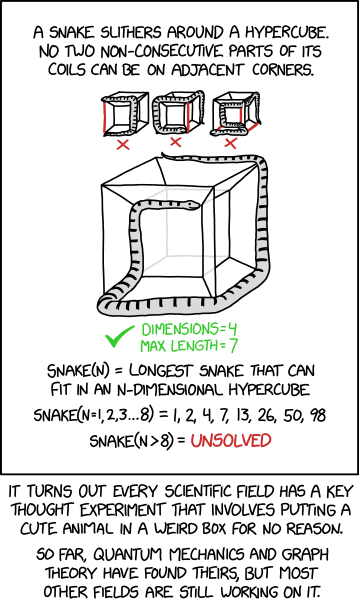this post was submitted on 06 Aug 2025
474 points (99.2% liked)
xkcd
12541 readers
16 users here now
A community for a webcomic of romance, sarcasm, math, and language.
founded 2 years ago
MODERATORS
you are viewing a single comment's thread
view the rest of the comments
view the rest of the comments

This is not my wheelhouse, and presumably were what I am about to suggest be right a million other people would have already pointed it out (not on lemmy necessarily, just in general). But aren't all of those sides equal so the relationship between snake's and any cube side's length effectively (as we see it anyway) shrinks/grows as it moves around the hypercube.
To be honest I don't even understand what the cartoon means by 'two non-consecutive parts of its coils' so I wouldn't take my word for anything.
Took me a while to follow that too! The three examples of fails at the top each show instances where there are non-consecutive parts of the snake on adjacent corners - it's the lines highlighted in red.
Basically no two parts of the snake that aren't directly joined to each other in the snake are allowed to be on corners which are only a line apart.
I think.
Any two coils that are not directly connected. For example, suppose we number from the head, coil 1, 2, 3, 4. Then pairs that are not directly connected are: (1, 3), (1, 4), (2, 4). The endpoints of these pairs of segments cannot be connected by an edge of the cube.